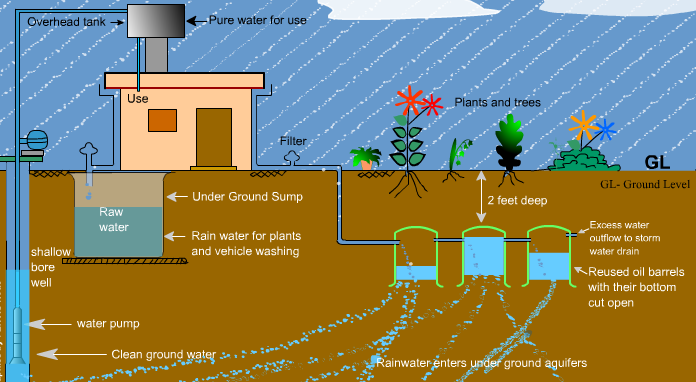
Rainwater harvesting is a sustainable practice that has been gaining traction worldwide as a method of conserving water and managing resources more efficiently. It involves collecting and storing rainwater for later use, which can serve various purposes like irrigation, drinking water, and household needs. However, an often overlooked benefit of rainwater harvesting is its potential to support groundwater recharge — a critical process for maintaining healthy aquifers and ensuring the long-term availability of underground water resources. In this article, we explore how rainwater harvesting tanks can play a pivotal role in supporting groundwater recharge.
The Role of Rainwater Harvesting Tanks in Groundwater Recharge
Rainwater harvesting involves capturing rainwater from rooftops, roads, or other surfaces and storing it in tanks for future use. Beyond this, the collected water can also be directed to recharge groundwater systems through specific techniques. Here’s how rainwater harvesting tanks can support groundwater recharge:
Directing Collected Rainwater to Recharge Pits
One of the simplest ways to support groundwater recharge using rainwater harvesting systems is by directing stored water from tanks to recharge pits or wells. These recharge pits are dug into the ground and filled with materials such as gravel or sand that allow water to slowly seep into the soil. The stored rainwater can be released gradually into these pits during dry spells, ensuring that it percolates down into the groundwater system.
By diverting rainwater directly into the ground, the rainwater harvesting system mimics the natural process of groundwater recharge, replenishing aquifers that may otherwise be under stress due to over-extraction.
Reducing Surface Runoff
Rainwater harvesting tanks can help reduce surface runoff, which is the water that flows over hard surfaces (like roads or parking lots) during heavy rains, carrying pollutants and debris into stormwater drains. By collecting rainwater at the point of contact (such as a building roof), rainwater harvesting systems reduce the amount of water that flows into storm drains and instead allow it to be stored or directed for groundwater recharge.
Integrating with Infiltration Systems
Rainwater harvesting systems can be integrated with specialized infiltration systems like soak pits, infiltration trenches, or permeable pavements. These systems are designed to encourage rainwater to slowly infiltrate into the ground rather than running off into stormwater drains. By allowing collected rainwater to infiltrate the soil, they enhance the natural process of groundwater recharge.
In urban settings, these systems can be particularly effective in mitigating the challenges posed by impervious surfaces. Soak pits, for example, are shallow, dug-out areas filled with porous materials that facilitate the infiltration of water into the ground. Rainwater collected in storage tanks can be piped into these systems, making use of the stored rainwater for recharge.
The Environmental Benefits of Groundwater Recharge Through Rainwater Harvesting
Aside from the obvious benefits for groundwater conservation, rainwater harvesting systems have a variety of positive environmental impacts:
Reduced Erosion and Flooding: By capturing and storing rainwater, these systems reduce the volume of water flowing over land surfaces, which helps reduce erosion and minimizes the risk of flooding in urban areas.
Improved Water Quality: Rainwater is often cleaner than surface water, which may be contaminated by agricultural runoff or industrial waste. Harvested rainwater, when properly filtered, can be used to replenish groundwater, improving its overall quality.
Sustainable Water Use: Groundwater recharge through rainwater harvesting promotes a more sustainable water cycle. Instead of depleting aquifers through excessive extraction, the natural replenishment process can ensure a more stable, long-term water supply.
Conclusion
Rainwater harvesting tanks offer a practical and effective way to support groundwater recharge. By collecting rainwater and directing it into the ground, rainwater harvesting systems help replenish aquifers, mitigate flooding, reduce surface runoff, and improve water quality. In regions where groundwater resources are under stress, integrating rainwater harvesting with recharge techniques provides a sustainable, low-cost solution to ensure long-term water security.


